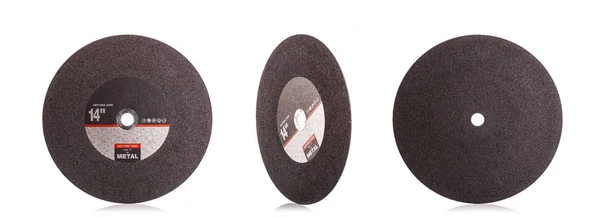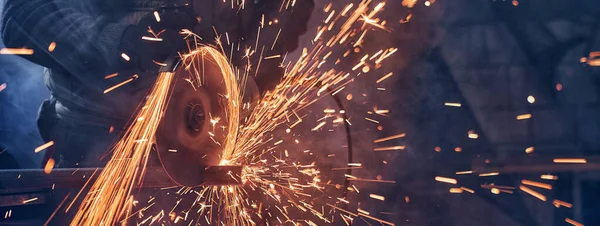Angle grinders are versatile tools that find applications in various industries and DIY projects. One of the key components of an angle grinder is the cutoff wheel, which plays a critical role in cutting through different materials such as metal, concrete, and tiles. When it comes to cutoff wheels, there’s an ongoing debate about whether a thin or thick wheel lasts longer. In this article, we will explore the factors that influence the longevity of cutoff wheels, the advantages and disadvantages of both thin and thick wheels, and help you make an informed decision based on your specific needs.
Understanding Cutoff Wheels
Before delving into the discussion of thin vs. thick cutoff wheels, it’s essential to understand what these wheels are and how they work. Cutoff wheels, also known as abrasive wheels or discs, are composed of abrasive grains bonded together with a matrix material. The abrasive grains are responsible for cutting through the material, while the matrix holds them together and provides structural integrity to the wheel.
Cutoff wheels come in various sizes, diameters, and thicknesses. The thickness of the wheel is a crucial factor that affects its performance and longevity. Thin and thick cutoff wheels serve different purposes and are designed for specific tasks.
Thin Cutoff Wheels
Thin cutoff wheels are characterized by their slim profile. They typically have a thickness ranging from 0.045 inches to 0.125 inches (1.1 mm to 3.2 mm). These wheels are commonly used for precision cutting tasks and are ideal for making clean, narrow cuts in metal, steel, and stainless steel. Thin wheels are known for their ability to produce minimal material wastage, making them suitable for applications where precision and efficiency are essential.
Advantages of Thin Cutoff Wheels:
- Precision Cutting: Thin wheels excel at making precise cuts, which is crucial in applications such as metal fabrication, plumbing, and electrical work.
- Minimal Material Wastage:Due to their narrow profile, thin wheels create less material wastage during cutting, which can be cost-effective.
- Reduced Heat Generation:Thin wheels generate less heat during cutting, which helps prevent overheating and material distortion.
- Faster Cutting Speed: The slim design of thin wheels allows for faster cutting, improving overall efficiency.
Disadvantages of Thin Cutoff Wheels:
- Fragility:Thin wheels are more prone to breaking or shattering, especially when used incorrectly or on hard materials.
- Limited Depth of Cut: Thin wheels may not be suitable for applications that require cutting through thick materials.
Thick Cutoff Wheels
Thick cutoff wheels, on the other hand, have a greater thickness, typically ranging from 0.125 inches to 0.250 inches (3.2 mm to 6.4 mm) or even more. These wheels are designed for heavy-duty cutting tasks, such as cutting through thick steel, concrete, masonry, and other hard materials. Thick wheels provide stability and durability in demanding applications.
Advantages of Thick Cutoff Wheels:
Durability: Thick wheels are more robust and less prone to breaking, making them suitable for heavy-duty applications.
- Versatility:Thick wheels can handle a wider range of materials and are effective for cutting through thick sections.
- Longer Lifespan:Due to their durability, thick wheels tend to have a longer lifespan, reducing the frequency of wheel changes.
- Enhanced Safety: Thicker wheels provide a greater margin of safety and stability during cutting.
Disadvantages of Thick Cutoff Wheels:
- Slower Cutting Speed: Thick wheels tend to cut more slowly compared to thin wheels, which can affect productivity.
- Increased Material Wastage: The wider kerf created by thick wheels results in more material wastage.
Factors Affecting Cutoff Wheel Longevity
The longevity of a cutoff wheel depends on several factors, regardless of whether it’s thin or thick. Understanding these factors will help you make an informed decision:
- Material Type:The type of material you’re cutting plays a significant role. Thin wheels are better for soft materials like aluminum, while thick wheels are suitable for hard materials like steel and concrete.
- Wheel Quality:The quality of the cutoff wheel, including the abrasive material and bonding agent, influences its longevity. High-quality wheels tend to last longer.
- Operating Speed: Running the grinder at the correct speed for the wheel and material is crucial. Excessive speed can wear out the wheel quickly.
- Proper Technique: Using the right technique, including maintaining a consistent cutting pressure and angle, can extend the life of the cutoff wheel.
- Wheel Size: The size of cuttingwheel should match the grinder’s capacity and the job at hand. Using an appropriately sized wheel can improve longevity.
- Cooling: Cooling mechanisms, such as water or air cooling, can help dissipate heat and extend the life of the wheel.
- Wheel Dressing: Regularly dressing or truing the wheel helps maintain its sharpness and cutting efficiency.
Making the Right Choice
Choosing between thin and thick cutoff wheels depends on the specific tasks you need to perform. Here are some guidelines to help you make the right choice:
- Thin Cutoff Wheels:
- Use thin wheels for precision cutting in tasks that require clean, narrow cuts.
- Opt for thin wheels when working with soft metals like aluminum and copper.
- Consider thin wheels for tasks where minimal material wastage and heat generation are crucial.
- Thick Cutoff Wheels:
- Choose thick wheels for heavy-duty cutting in thick steel, concrete, and masonry.
- Use thick wheels when stability and durability are paramount, especially in demanding applications.
- Consider thick wheels for tasks where a longer lifespan offsets the slower cutting speed.
Conclusion
The choice between thin and thick cutoff wheels ultimately depends on your specific cutting needs and the materials you frequently work with. Both types of wheels have their advantages and disadvantages, and understanding these factors will help you make an informed decision. Remember that proper technique, wheel quality, and operating conditions play crucial roles in extending the longevity of any cutoff wheel. By selecting the right wheel for the job and using it correctly, you can ensure efficient cutting and maximize the lifespan of your angle grinder cutoff wheels.


